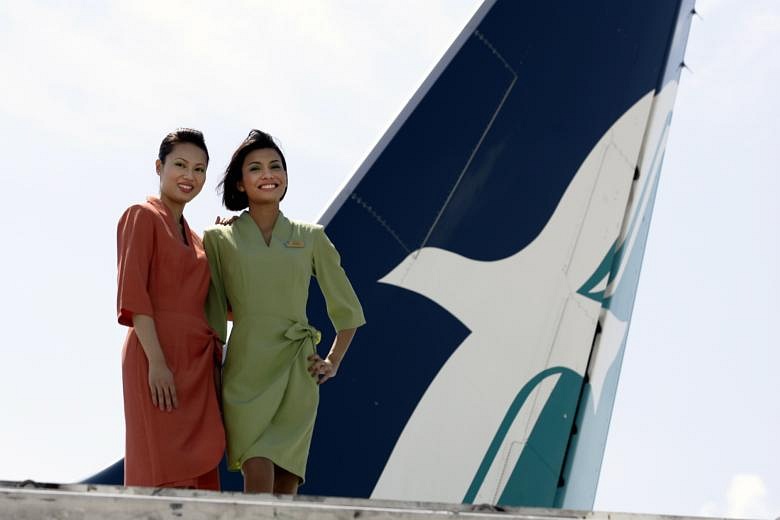Regional carrier SilkAir will be clipping its wings to eventually merge with Singapore Airlines (SIA), with its aircraft cabins to first undergo a $100-million upgrade in 2020.
SIA announced on Friday (May 18) that the merger between the two carriers will take place after a sufficient number of SilkAir's aircraft have been fitted with new cabin products, including new lie-flat seats in business class and seat-back in-flight entertainment systems.
While this could bring greater benefits for passengers, it will signal the end of the SilkAir name and aircraft livery that has flown the skies for over two decades.
Here are five things to know about SilkAir.
1. It began as Tradewinds
SilkAir was formed in 1975 as a subsidiary of SIA named Tradewinds, but it was not an airline yet.
As SIA's tours and travel arm, it was meant to develop and sell SIA-exclusive holiday packages.
On Feb 21, 1989, Tradewinds began airline operations catering to passengers holidaying in then-exotic destinations in the region, such as Pattaya, Phuket and Hatyai in Thailand, and Malaysian cities Kuantan and Tioman.
Its maiden flight was from Singapore's Changi Airport to Pattaya.
The airline quickly expanded its operations, with more regional destinations added to its schedule, such as Jakarta, Phnom Penh and Yangon.
2. SilkAir launched as full-fledged regional carrier with new name, logo, on April Fools' Day 1992

SilkAir was born on April 1, 1992 after Tradewinds underwent a rebranding exercise to transform into a premier regional carrier.
Its tour and travel operations were transferred to a wholly-owned subsidiary of SilkAir and retained the name Tradewinds Tours and Travels.
SilkAir's name and logo was the brainchild of United States-based airline corporate identity specialist Landor Associates.
The logo features a stylised seagull soaring against an aqua-blue and turquoise background.
As part of its transformation, the airline also embarked on a US$100-million aircraft buying spree to increase its fleet size to 12 by 1997. It had four Boeing 737-300 jets in June 1992.
SilkAir also launched a new executive class and introduced routes to Vientiane and Cebu.
3. Tragedy on SilkAir flight 185

On Dec 19, 1997, a SilkAir flight returning from Jakarta, Indonesia plunged into the Musi River near Palembang in southern Sumatra, killing all 104 on board.
There were 46 Singaporeans on the flight, including the pilot Tsu Way Ming and five crew members.
Among the passengers was Eurasian model-turned-writer Bonny Hicks, 29.
The plane had departed Jakarta's Soekarno - Hatta International Airport at about 3.30pm and was due to land in Changi Airport at about 6pm.
However, it lost altitude from 35,000 ft and crashed into the river at about 4.15pm Indonesia time.
Search operations uncovered parts of the airplane's tail portion on land but most of its wreckage were found in the river in an area of about 60m by 80m.
About 73 per cent of the aircraft was recovered when operations ended in January 1998.
The plane was said to have been flying in clear weather at the time, with no distress signal sent prior to the crash. Various investigators have been unable to find conclusive evidence on what happened.
SilkAir stopped using the code MI185 for its daily afternoon Jakarta-Singapore flights following the crash.
4. SilkAir cabin crew saw four outfit changes over the years
SilkAir flight attendants first took to the skies donning seagull motif dresses by homegrown designer, Celia Loe.
The design was meant to reflect its image as a resort airline in the early 1990s.
As it began to reach out to more business travellers as part of market expansion, SilkAir in 1994 adopted new uniforms created by Paris fashion house Balenciaga.
It comprised a floral blouse, skirt and fitted jacket.

A decade later, in 2004, SilkAir launched a one-piece wrap dress with an oriental design created by its own cabin crew.
It took another decade later in 2015 before the airline refreshed its cabin crew image again, with a more casual collection by local fashion designer Alexandria Chen.

Its new one-piece uniform comes in two variations - aqua-blue for junior crew and a plum-red version for senior crew.
Both variations have an asymmetric neckline, pleated sleeves, a dark blue skirt and a seagull-patterned georgette bow pin.
5. Where SilkAir stands today

SIA's latest full-year earnings released on May 17 show that SilkAir's operating profit had slumped from $27 million last year to $3 million, due to higher costs like fuel, handling charges and landing and parking expenses.
However, parent company SIA achieved a net profit of $893 million, its highest since 2011.
SilkAir now operates a fleet of 11 Airbus A320-family aircraft and 22 Boeing 737-800 and 737 MAX 8 aircraft.
It is now in the midst of transitioning to an all-737 fleet, and serves 49 destinations in 16 countries.
Both Asian and Western meal choices are offered on SilkAir flights.
In 2016, it launched its All-Time Favourite menu for business class passengers, which includes Hainanese chicken rice, fried carrot cake and mee rebus.
The airline has codeshare agreements with Air New Zealand, Fiji Airways and Garuda Indonesia, among other carriers.
Sources: The Straits Times, Singapore Infopedia, SilkAir


